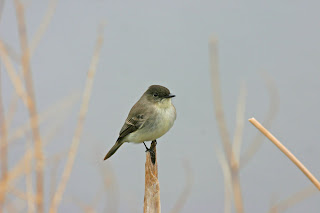Last week I spend three days in Elkwater, a small resort town on the north side of the Cypress Hills Inter-provincial Park near Medicine Hat, Alberta. I was attending the second forum of the
Crossing the Medicine Line Network. The CMLN is a loose organization of individuals, agencies and non-governmental organizations concerned with conservation of the Northern Great Plains.
The name of our group comes from the term applied to the US/Canadian border in this area by the Native Americans of the Northern Great Plains during the late 19th century. It described a boundary where the policies of governments changed for the Native Americans (or First Nations people in Canada). For the Native Americans fleeing the U.S. Army, the land north of the 49th parallel meant refuge. Sitting Bull and his band of Sioux made it across the line after the Battle of the Little Bighorn but Chief Joseph and the Nez Perce were decimated just south of the line. A fascinating article about the history of the Medicine Line can be found
here. Although the border politics have changed since then it is still very present and a still a barrier in many ways.
One of the objectives of the CMLN is to promote communication about ecology and conservation between the political entities in the region, primarily between the US and Canadian people but also between Alberta and Saskatchewan. Often our understanding and maps of our shared species of interest end at these borders but the animals themselves are not confined by political boundaries. We are working towards having information be seamless across these borders to match the realities of the ecology and species we work with and thus provide better context for each individual project at the state or provincial level.

This image from our website shows some of the species for which we have common concerns; Swift Fox, Greater Sage Grouse, Loggerhead Shrike, and Burrowing Owl. It also includes a map of the core area of interest, the Milk River basin. Other species of interest include: Baird's Sparrow, Sprague's Pipit, McCown's Longspur, Chestnut-collared Longspur, Long-billed Curlew, and Pronghorn Antelope to name a few.
The image below is a product of one of the projects I have been involved in and was produced by Bryce Maxell and his crew at the Montana Natural Heritage Program. It is a probability of occurrence map for the Baird's Sparrow and it demonstrates one of the issues we are dealing with. Each of the dots on the map is a bird count location from the database (not all counts but we are working on getting there). The black dots represent a count where at least one Baird's Sparrow was found, the gray dots a count where no Baird's Sparrows were found. Notice the big white areas around Montana. There are a lot of bird counts going on there too and one of the goals of our group is to find a way to make these sorts of predictive models for species occurrence relative to the entire breeding range of many of the species we are concerned with on both sides of the borders and across state and provincial boundaries.

I couldn't help but put in the following map too. It shows a predicted occurrence map for 12 grassland bird species in Montana. You can see how important the area in Valley, Phillips, and Blaine Counties is for these species. It isn't much ground when you consider the extent of the Great Plains and the former breeding range for many of these species. If we were able to extend this picture further north it would certainly extend into southern Saskatchewan and Alberta, but not too far, which is why many of the species we are dealing with are considered Endangered just across the border in Canada - Greater Sage-Grouse, Swift Fox, Burrowing Owl and Sprague's Pipit to name a few.

In addition to the grassland bird data we discussed Greater Sage-Grouse populations dynamics along the border including some fascinating genetics work conducted by Krissy Busch. I will tell you more about that later but it involves the results of the analysis conducted on feathers gathered from the leks across the region, a truly trans-boundary project. Energy production, primarily shallow gas but also wind energy, and it's impacts on wildlife populations were also discussed. This is one of the primary threats to populations of wildlife in the area - right after the continued threat of loss of native prairie to conversion to cropland.
It was a great three days and on top of the excellent talks and discussion I was able to visit with good friends I haven't seen for a while. There is a really good group of people involved in this effort.
I was also able to look around the small community of Elkwater a bit. My friend Beth Madden, Wildlife Biologist at Medicine Lake NWR found a pair of Merlins apparently nesting right across the street from the motel we were staying at and I got a few photos of the male. The female was often in the neighborhood screaming at something.


There were very many Black-capped Chickadees. More than I had observed in one spot in a long time. West Nile Virus must not have made it to the Cypress Hills yet.

Wild Turkeys had been introduced in the area and were quite common around town.


I just couldn't resist ending this post with another "mammal with an attitude" photo.


















































